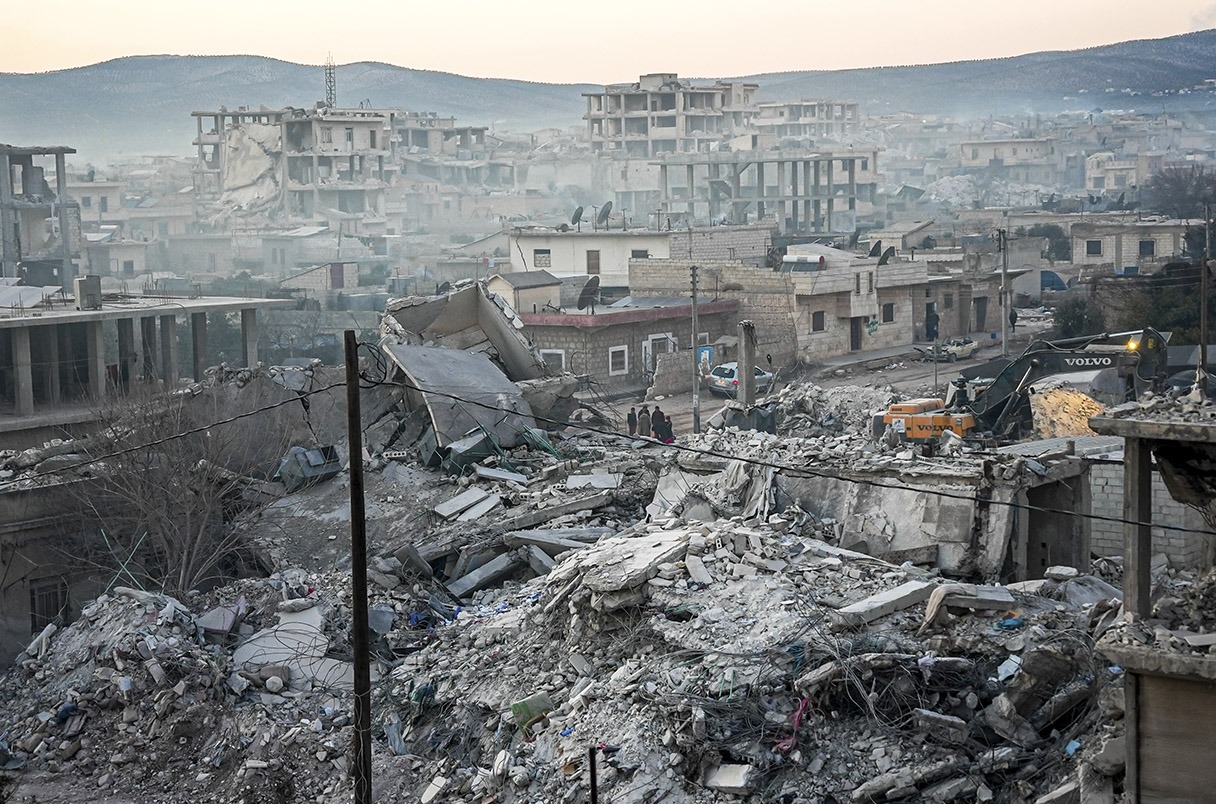En 2021, Google comenzó a desplegar un sistema que no necesita en absoluto de una red sísmica tradicional. Aprovecha los diminutos acelerómetros de los teléfonos Android que también pueden detectar el movimiento de la Tierra. Aunque son menos precisos que los sensores tradicionales, la detección combinada de muchos teléfonos puede ser lo suficientemente efectiva. En el nuevo estudio, los investigadores de Google informan que emitieron avisos para 1279 eventos. Sólo tres terminaron siendo falsas alertas, provocadas, por ejemplo, por las vibraciones de las tormentas eléctricas. Millones de usuarios en 98 países recibieron alertas del sistema, y las encuestas posteriores a los terremotos revelaron que el 84% de los encuestados confiaría más en las alertas la próxima vez. Dijo Harold Tobin, sismólogo de la Universidad de Washington, el sistema mostró “algunos éxitos operativos que son impresionantes”.
On 6 February 2023, a magnitude 7.8 earthquake violently shook Turkey and Syria with an energy equivalent to almost 300,000 megatons of exploding TNT. Buildings tumbled, and plumes of dust filled the sky. By the time the aftershocks had ended, some 59,000 people were confirmed dead.
Against this grim backdrop was a small scientific victory that may have saved some lives: More than half a million people were alerted to the coming quake on their phones, and another 4 million were alerted to a major aftershock that came 9 hours later, with warning times ranging from a few seconds to 1 minute. The earthquake was one of hundreds around the world for which alerts were provided by an early warning system built into Google’s Android phone system, according to a paper published today in Science describing its first 3 years.
“This is a brilliant way of providing that information at a relatively low cost to a large amount of people,” says John Cassidy, a seismologist with Natural Resources Canada who was not involved in the study.
Earthquake early warning systems rely on alerts traveling through fiber optic cables and cellphone networks much faster than the earthquake waves themselves. Traditionally, researchers have built systems that use buried seismometers to detect an earthquake’s size and magnitude and relay a warning to phones or loudspeakers farther out from the quake’s epicenter. Even a few seconds of warning can give people enough time to drop to the floor and take cover.
In 2021, Google began to roll out a system that does not need a traditional seismic network at all. It takes advantage of tiny accelerometers in Android phones that can also detect Earth’s motion. Although they are less precise than traditional sensors, the combined sensing of many phones can be effective enough. Location and intensity measurements are sent to Google’s servers, where an algorithm identifies the quake. For earthquakes magnitude 4.5 or bigger, alerts are pushed out to vulnerable people.
In the new study, Google researchers report issuing alerts for 1279 events. Only three ended up being false alerts, triggered, for instance, by vibrations from thunderstorms. Millions of users in 98 countries received alerts from the system and surveys after the earthquakes found that 84% of respondents would trust the alerts more next time. The system showed “some operational successes that are impressive,” says Harold Tobin, a seismologist at the University of Washington. “But the most challenging events are the largest, and it is clear that the alert warning system didn’t do all that one would hope for during the Turkey earthquake.”
After the 2023 Turkey-Syria earthquake, the Google team realized it had initially underestimated the magnitude. Warnings were sent to some people after the shaking had already begun, whereas others did not get alerts at all. In response, the Google team tweaked its algorithm, increasing the duration of the initial earthquake assessment period and removing phones that detect too much background shaking noise. The team also stopped sending alerts as vibrations because they would interfere with detecting aftershocks.
The researchers then tested the new algorithm on the same data from the 2023 earthquake and found it would have performed much better. Some 10 million phones would have received a “take action” alert, providing up to a 35-second warning, while a lesser “be aware” alert would have been received by 67 million people in the region. In April, the updated algorithm was used to detect a magnitude 6 earthquake near Istanbul and issued alerts, says Richard Allen, a seismologist at the University of California, Berkeley and Google collaborator who was lead author of the new study. “For each earthquake detection, we are learning so that the algorithms do much better,” adds Allen, who in 2018 helped unveil ShakeAlert, a traditional warning system serving the U.S. West Coast.
The goal of the Google system is to supplement existing detection networks like ShakeAlert and to help residents in countries that might lack traditional seismic networks, Allen says. Although those goals are laudable, Tobin cautions that the Android system is not a replacement for a dedicated system. “Some countries might choose not to spend money on developing a government-sponsored earthquake alert system because they think Android has them covered,” he says.
Others have concerns about the accessibility of data in a system that is controlled by a company rather than a public agency. Gavin Hayes, senior science adviser for the U.S. Geological Survey, encourages Google to continue to be open with its data, sharing how the system is performing with researchers and governments. “This article is really the first attempt for the system to provide publicly accessible information,” Hayes says. “It would be great if this led to some kind of public archive.”
Ebru Bozdağ, a seismologist at the Colorado School of Mines, is interested in the potential for the Android system to identify earthquakes in remote regions without traditional seismometers. In the end, however, earthquake early warnings will only go so far, she adds. Most earthquake risk comes from unreinforced buildings. Ultimately, she says, the way to reduce that risk “is to improve the quality of buildings and make sure that they won’t collapse.”
Fuente: https://www.science.org


